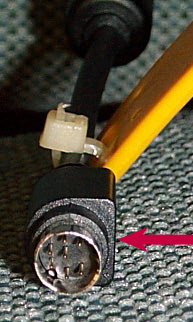 |
<-----------------------------> |
 |
The red arrow points towards the flat side of the connector which should be turned to face the back of the camera. |
Again, the red arrow points to the flat side of the connector which must face the back of the camera when inserting the connector. |